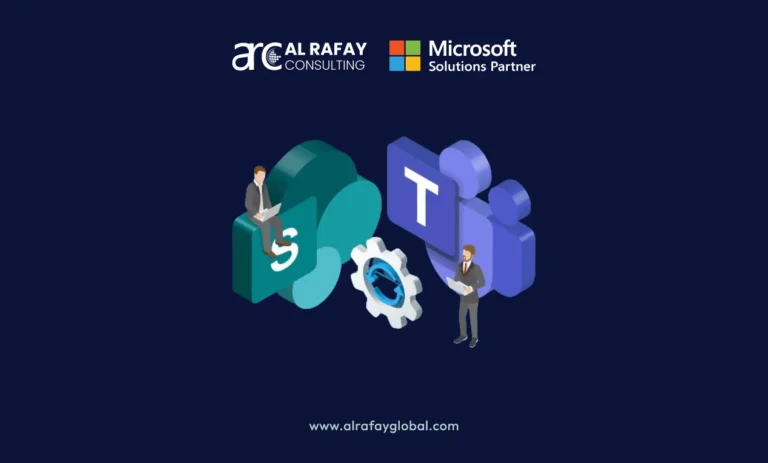The rise of generative AI, exemplified by models like ChatGPT, DALL-E, and Stable Diffusion, has rapidly expanded possibilities across industries. These advanced AI models generate human-like text, images, and even music, opening avenues for creativity, automation, and problem-solving on an unprecedented scale. By 2025, the global AI market is expected to surpass $190 billion, largely driven by generative AI’s adoption and new use cases across fields like healthcare, finance, and retail.
Yet, as organizations invest more in generative AI, measuring return on investment (ROI) becomes crucial. Unlike traditional AI applications focused on prediction, generative AI offers distinct value through creativity and process transformation, making its impact less tangible. Accurately assessing ROI ensures that businesses align their investments with measurable results and unlock sustained benefits.
This blog will explore practical frameworks for calculating Enterprise AI ROI, discussing metrics, use cases, and challenges to help organizations maximize value from their generative AI investments.
Understanding Generative AI and Its Applications
What is Generative AI?
Generative AI refers to machine learning models designed to produce new content, including text, images, and even audio. These models are based on architectures like transformers, which are foundational in models such as OpenAI’s GPT series, Google’s BERT, and others. These models analyze vast amounts of data, learning patterns, structures, and relationships to create original outputs that resemble human creation.
Key Applications Across Industries
Generative AI is applied across various sectors, including:
Healthcare: In healthcare, generative AI assists in synthesizing medical records, generating patient-specific insights, and developing drug formulas through molecule generation.
Finance: In finance, generative AI supports algorithmic trading, portfolio optimization, and personalized financial advice.
Retail: Retail companies use AI to create tailored product recommendations, personalized marketing messages, and automated customer support solutions.
Marketing and Content Creation: Generative AI enables efficient creation of advertising copy, social media content, and even product descriptions.
Potential Benefits
Generative AI offers substantial benefits:
Automation and Efficiency: Automating content creation can cut down time and labor costs.
Personalized Experiences: AI-driven insights allow organizations to deliver highly tailored experiences to customers, improving satisfaction.
New Revenue Streams: Generative AI enables the development of new products and services, often opening previously inaccessible markets.
Why ROI Measurement is Complex for Generative AI
Unique Challenges
Measuring ROI in generative AI involves unique challenges:
Long-Term vs. Short-Term Benefits: Many benefits, like improved brand reputation or customer loyalty, develop over time, complicating short-term ROI assessments.
Intangible Outcomes: Generative AI often contributes to intangible outcomes, such as enhanced customer satisfaction and improved brand perception.
Rapidly Changing Technology: With fast-evolving technologies, benchmarks quickly become outdated, making it challenging to establish long-term standards.
The Need for a New ROI Framework
Given the unique nature of generative AI, traditional ROI metrics, such as immediate profit gains, may be insufficient. Generative AI requires a flexible framework, incorporating metrics tailored to AI-driven creativity and automation, and accounting for the long-term nature of its impact.
Key Metrics for Measuring Generative AI ROI
Direct Financial Metrics
Revenue Impact: Generative AI can enhance revenue by improving customer engagement, product recommendations, and service personalization. For instance, a personalized shopping experience can increase conversion rates by up to 15%.
Cost Savings: Automation of repetitive tasks, such as customer support or content creation, can reduce labor costs. Research by Gartner suggests that AI-driven automation could reduce business expenses by up to 30% by 2030.
Efficiency and Productivity Metrics
Process Efficiency: Metrics like “time-to-task” can show efficiency gains when automating workflows, such as data processing or report generation.
Employee Productivity: Generative AI can free employees from repetitive tasks, redirecting their efforts to higher-level responsibilities. In customer support, for instance, an AI-driven chatbot could resolve common queries, allowing staff to focus on complex inquiries.
Intangible Metrics
Customer Experience (CX): Improvements in customer satisfaction, tracked through surveys or feedback, can reflect AI’s impact on CX.
Brand Value and Market Positioning: Adopting AI enhances a company’s image as an innovative brand, potentially increasing market share. Brand perception metrics, such as Net Promoter Score (NPS), can help track these benefits.
Risk Management Metrics
Compliance and Risk Reduction: Generative AI can streamline compliance by automatically generating standardized documents, reducing the risk of human error in regulated industries.
Error Rate Reduction: With applications like error detection in data entry, AI can significantly reduce error rates, enhancing output quality and minimizing costly mistakes.
Framework for Assessing Generative AI ROI
Effectively tracking the return on investment (ROI) for generative AI applications requires a systematic approach. Here’s a detailed breakdown of essential steps to ensure accurate measurement and ongoing optimization of AI initiatives.
Step 1: Set Clear Objectives and KPIs
The first step in tracking ROI is defining clear goals and corresponding key performance indicators (KPIs) tailored to the specific generative AI application. Establishing these objectives upfront allows organizations to focus on measurable outcomes.
Examples of Objectives and KPIs:
Content Generation Speed: For marketing teams using generative AI tools, a critical KPI could be the average time taken to generate a specific volume of content. For instance, a goal might be to reduce content creation time by 30% over three months.
Error Reduction Rates: In compliance-related tasks, an essential KPI could involve measuring the reduction in errors after implementing AI solutions. A target might be to decrease compliance errors by 25% within the first quarter of use.
Step 2: Baseline Measurement
Before implementing generative AI, it’s crucial to establish a baseline by collecting performance data on key metrics. This baseline data serves as a point of reference, enabling accurate comparisons after AI deployment.
Key Actions:
Data Collection: Gather quantitative data on current performance levels, including productivity rates, error frequencies, and customer satisfaction scores.
Analysis: Analyze this data to understand existing challenges and opportunities for improvement.
Step 3: Implement A/B Testing and Control Groups
To isolate the impact of generative AI, organizations should conduct A/B testing. This involves creating two groups: one that utilizes the AI solution and a control group that employs traditional methods.
Benefits of A/B Testing:
Measuring Impact: A/B testing allows organizations to assess AI’s effect on metrics such as productivity and accuracy, providing a clear view of its value.
Identifying Improvements: It helps identify specific areas where generative AI outperforms traditional methods, guiding further investments.
Step 4: Regularly Reassess and Adapt KPIs
Given the dynamic nature of generative AI, it’s vital to regularly reassess and update KPIs as use cases evolve. As organizations gain experience and insights, their objectives may shift.
Adaptive Strategies:
Customer Expectations: As customer expectations change, adapt KPIs to focus on new areas, such as improving response times or enhancing personalization features.
Ongoing Evaluation: Implement a schedule for reviewing KPIs and adjusting them based on performance data and organizational goals, ensuring alignment with the latest advancements in generative AI.
Challenges and Considerations in Generative AI ROI Measurement
Data Privacy and Ethical Considerations
Generative AI applications face privacy concerns, particularly with customer data. Organizations must evaluate the regulatory impact of AI on ROI, considering possible fines or reputation loss from privacy violations.
Data Quality and Availability
Generative AI models require large amounts of quality data. Poor data quality can hinder performance, reducing ROI potential. Building clean, extensive datasets is vital to maximizing generative AI’s impact.
Continuous Adaptation to Technology Changes
AI technology evolves rapidly, and what is innovative today may become outdated soon. To maximize ROI, organizations should plan for ongoing investment in model updates and employee training.
Best Practices for Maximizing Generative AI ROI
To fully leverage generative AI technologies and maximize return on investment (ROI), organizations should adopt best practices that foster collaboration, continuous improvement, and strategic planning. Here are some key strategies to enhance the ROI of generative AI initiatives.
1. Involve Stakeholders Across Functions
Cross-functional collaboration is essential for setting realistic goals and KPIs. Involving stakeholders from various departments ensures that all perspectives are considered, leading to more comprehensive and effective AI strategies.
Benefits of Cross-Functional Collaboration:
Alignment of Goals: Engaging teams from IT, marketing, finance, and operations promotes alignment on objectives and expected outcomes, minimizing silos and misunderstandings.
Diverse Insights: Different departments bring unique insights and requirements, which can lead to more innovative applications of generative AI that cater to varied needs.
Improved Adoption: When multiple stakeholders are involved in the planning and implementation processes, it increases the likelihood of successful adoption and utilization of AI tools across the organization.
2. Monitor and Reinvest in AI Optimization
As customer preferences and market dynamics evolve, it’s crucial to continuously monitor generative AI performance and reinvest in optimization. Setting aside a portion of the ROI for model retraining and updates can significantly enhance AI effectiveness.
Strategies for Ongoing Optimization:
Regular Performance Assessments: Continuously evaluate the performance of generative AI models against established KPIs. This helps identify areas for improvement and ensures that the technology remains aligned with business objectives.
Feedback Loops: Establish mechanisms for collecting feedback from end-users and stakeholders to refine AI models and improve their functionality over time.
Budget for Upgrades: Allocate a portion of the realized ROI to retrain models and implement necessary updates, ensuring the generative AI solutions remain relevant and effective.
3. Focus on Scalability and Long-Term Vision
Designing AI models with scalability in mind is crucial for achieving sustained ROI. Scalable models allow organizations to adapt applications for various uses, thereby maximizing the value derived from their investments.
Key Considerations for Scalability:
Modular Architecture: Develop AI systems with a modular architecture that allows for easy updates and enhancements. This flexibility enables the integration of new features and capabilities without overhauling existing systems.
Adaptable Use Cases: Consider potential future applications of generative AI during the design phase. By envisioning how AI can be utilized across different areas of the organization, teams can create more robust solutions.
Long-Term Strategic Planning: Integrate generative AI into the organization’s long-term vision. This approach ensures that AI initiatives align with overarching business goals, facilitating sustained investment and development over time.
Tools and Technologies for Tracking Generative AI ROI
As generative AI continues to reshape industries, tracking its return on investment (ROI) effectively becomes essential for organizations. Leveraging specialized tools and technologies can streamline this process, providing insights into performance and value. Here’s an overview of some key tools and technologies that facilitate tracking generative AI ROI.
AI-Specific Analytics Tools
Platforms designed for AI model monitoring play a crucial role in tracking generative AI performance. Some notable tools include:
DataRobot: This platform offers an end-to-end automated machine learning solution, providing insights into model performance and ROI. It helps organizations understand how generative AI impacts business outcomes over time.
MLflow: An open-source platform for managing the ML lifecycle, MLflow allows users to track experiments, reproduce runs, and manage models. This capability is vital for assessing the ongoing value generated by AI initiatives.
Key Features of AI-Specific Tools
Tool | Key Features |
DataRobot | Automated model monitoring, performance insights |
MLflow | Experiment tracking, model management |
Integration with Business Intelligence (BI) Platforms
Integrating generative AI metrics with popular business intelligence tools is crucial for holistic ROI tracking. Some widely used BI platforms include:
Tableau: Known for its powerful data visualization capabilities, Tableau enables users to create interactive dashboards that aggregate generative AI metrics with traditional business data, providing a comprehensive view of performance.
Microsoft Power BI: This tool offers seamless integration with various data sources, allowing organizations to visualize AI-driven insights alongside their existing metrics, making it easier to evaluate overall impact.
Benefits of BI Integration
Holistic View: Combining AI metrics with traditional business KPIs offers a more nuanced understanding of organizational performance.
Real-time Analytics: Organizations can access up-to-date insights, enabling quicker decision-making based on AI contributions.
Data Visualization and Reporting
Communicating ROI findings effectively to stakeholders is critical for buy-in and strategic planning. Data visualization tools help in illustrating complex data patterns, making insights more accessible. Notable tools include:
D3.js: A powerful JavaScript library for producing dynamic, interactive data visualizations in web browsers, D3.js allows for customized visual representations of ROI data.
Google Data Studio: This user-friendly tool enables the creation of shareable reports and dashboards, facilitating collaboration and discussion around AI performance and ROI metrics.
Importance of Visualization Tools
Enhanced Clarity: Visualization tools simplify complex data, making it easier for stakeholders to grasp the implications of generative AI investments.
Improved Communication: By presenting data visually, organizations can foster better discussions and decision-making processes around AI initiatives.
Comparing Generative AI ROI to Other Types of AI Investments
As organizations consider their investments in artificial intelligence (AI), it’s essential to understand the differences in ROI across various AI types. This analysis highlights the unique challenges and opportunities associated with generative AI compared to predictive and prescriptive AI.
Differences in ROI Measurement Across AI Types
One of the most significant challenges in measuring ROI for generative AI lies in its creative outputs. Unlike predictive or prescriptive AI, which delivers quantifiable outcomes—such as accuracy in predictions or optimizations—generative AI’s impact is often found in more subjective areas, such as:
Customer Engagement: The quality of generated content can influence customer interactions and brand loyalty.
Innovation: Generative AI can drive creativity and lead to unique products or services that may not be easily quantified.
ROI Measurement Overview
AI Type | Measurement Characteristics | Examples of Outcomes |
Generative AI | Subjective, creative outputs | Enhanced customer engagement, new product ideas |
Predictive AI | Quantifiable predictions and optimizations | Sales forecasts, risk assessments |
Prescriptive AI | Actionable recommendations | Resource allocation, inventory management |
Factors Impacting ROI in Different AI Types
The resources required for training and iterating generative AI models significantly impact its ROI. These factors include:
Data Requirements: Generative AI models typically need vast amounts of data for training, leading to higher initial investment costs.
Complexity of Models: Developing and refining generative models can be resource-intensive and time-consuming.
In contrast, predictive models often provide more immediate, tangible ROI by enabling organizations to make informed decisions based on historical data.
When to Choose Generative AI Over Other AI Models
Generative AI excels in situations requiring creativity and variability, making it suitable for tasks such as content generation, design, and brainstorming. Consider the following scenarios:
Creative Content Creation: When generating unique marketing materials or creative assets.
Prototyping New Products: For developing innovative concepts that require a high level of creativity.
On the other hand, predictive and prescriptive models might be more cost-effective for tasks focused on data-driven predictions or rule-based automation, such as:
Sales Forecasting: Using historical data to predict future sales trends.
Operational Efficiency: Automating routine tasks based on established rules.
The Future of ROI in Generative AI
As organizations increasingly integrate generative AI into their operations, understanding the return on investment (ROI) becomes paramount. The landscape of ROI tracking in generative AI is rapidly evolving, and several key trends are emerging.
Advancements in Generative AI ROI Tracking
Future tools are expected to enhance tracking mechanisms by isolating AI-specific contributions to organizational performance. Traditional metrics may not fully capture the nuanced benefits that generative AI brings. Here are a few advancements anticipated in ROI tracking:
AI-Specific Performance Metrics: New tools will measure the unique impacts of generative AI initiatives on revenue, efficiency, and customer satisfaction.
Automated Data Collection: Future systems may automate the collection and analysis of performance data, reducing manual effort and improving accuracy.
Integration with Business Intelligence: Enhanced integration capabilities with existing business intelligence platforms will allow organizations to view AI performance in real-time.
Expected ROI Trends in Key Industries
Certain sectors are poised to see substantial ROI growth as generative AI technologies mature. The following industries are expected to lead the way:
Industry | Expected Growth Areas | Anticipated Benefits |
Healthcare | Personalized treatment, drug discovery | Improved patient outcomes, cost savings |
Finance | Fraud detection, risk assessment | Enhanced security, reduced losses |
Retail | Inventory management, personalized marketing | Increased sales, improved customer loyalty |
Preparing for Continuous Change
As generative AI continues to evolve, organizations must prepare for ongoing changes in technology and market dynamics. Adopting flexible ROI frameworks is crucial for sustaining value over time. Consider the following strategies:
Continuous Learning: Invest in training programs for employees to keep up with AI advancements.
Iterative Evaluation: Regularly assess the effectiveness of AI initiatives and adjust strategies accordingly.
Stakeholder Engagement: Involve key stakeholders in discussions about AI adoption and ROI measurement to foster a culture of innovation.
By embracing these advancements and preparing for continuous change, organizations can effectively leverage generative AI to drive meaningful ROI and remain competitive in their respective industries.
Conclusion
In this era of generative AI, organizations have tremendous potential to transform their operations and customer experiences. However, measuring ROI accurately is essential for aligning AI investments with business outcomes. This blog covered key metrics, challenges, and frameworks to help organizations effectively evaluate generative AI’s ROI. While ROI measurement is complex, organizations can optimize their investment with strategic planning and adaptive metrics.
The first step toward realizing generative AI’s full potential is to begin measuring its impact comprehensively. As organizations refine their approaches to generative AI ROI, they’ll not only enhance their technological capabilities but also secure a competitive edge in their respective markets.













